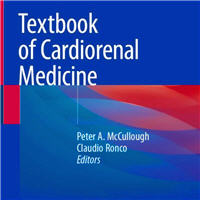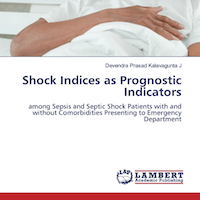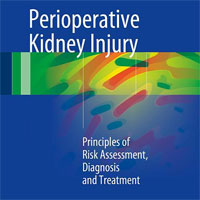Tag: epidemiology
Red Book: Report of the Committee on Infectious Diseases
Extending an 8-decade tradition of excellence, Red Book® provides the most reliable and clinically useful information on the manifestations, etiology, epidemiology, diagnosis and treatment of more than 200 childhood infectious... read more

Infection Microbiology and Management
Infection: Microbiology and Management provides a core resource for the understanding of medical microbiology and infectious diseases. Content covers microbiological and clinical diagnosis, through to clinical management,... read more

Approach to Peripheral Neuropathy
Peripheral neuropathy is frequently encountered in the clinical setting by doctors of various specialties. Neuropathies can be approached based on the temporal profile, spatial pattern and pathology. There is a need for... read more
Textbook of Cardiorenal Medicine
This textbook provides a practical and board-driven resource to describe and define the emerging field of cardiorenal medicine. Covering all aspects of the topic with depth and relevance, this groundbreaking reference brings... read more

Shock Indices as Prognostic Indicators: among Sepsis and Septic Shock Patients with and without Comorbidities Presenting to Emergency Department
Almost 30 million people are affected, and 3 million deaths happen every year because of sepsis. According to WHO's (World Health Organization) Global Report on Epidemiology and Burden of Sepsis report 2020, half of the... read more

Uncommon Diseases in the ICU
This book highlights the practical characteristics of uncommon diseases and presents the most relevant features for the management of intensive care units. It does not aim to provide an exhaustive description of uncommon... read more

ICU Precision Diagnosis with Metagenomic Sequencing
Despite promising results, metagenomics remains underutilized in the ICU. Several factors still limit its inclusion in routine critical care, including the lack of definitive clinical trials testing its utility, few laboratories... read more
Trauma, Eighth Edition
Hailed by readers and reviewers for its expert authorship and high-yield clinical content, Trauma is unquestionably the field's definitive text. Enhanced by a full-color design and a high-quality atlas of anatomic drawings... read more

Management of RV-Predominant Heart Failure and Shock in the Cardiac ICU
Cardiogenic shock from left ventricular failure is a common presentation in the intensive care unit. In contrast, right ventricular (RV)-predominant heart failure (HF) causing shock is less well recognized. We review... read more
ARDS Readmissions: A nationwide Cross-sectional Analysis of Epidemiology
Thirty-day readmission occurred in 18.4% of patients with acute respiratory distress syndrome (ARDS) in this sample, and early readmission is strongly associated with increased mortality compared to late readmission. Further... read more
Epidemiology, Outcomes, and Trends of Patients with Sepsis and Opioid-Related Hospitalizations
Sepsis is an important cause of morbidity and mortality in patients with opioid-related hospitalizations, and opioid-related hospitalizations contribute disproportionately to sepsis-associated deaths among younger patients.... read more
Quantifying the Burden of Viral Sepsis During the COVID-19 Pandemic and Beyond
Coronavirus disease 2019 (COVID-19), the disease caused by severe acute respiratory syndrome coronavirus 2 (SARS-CoV-2), has resulted in millions of deaths worldwide and countless more admissions to hospitals and ICUs. Since... read more
Epidemiology of Functional Seizures Among Adults Treated at a University Hospital
This case-control study found evidence to support previously reported associations, discovered new associations between functional seizures and PTSD, anxiety, and depression. An association between cerebrovascular disease... read more
Intracerebral Hemorrhage (ICH)
For most patients, the best treatment seems to be high-quality supportive care. Aggressive interventions (e.g., causing dramatic drops in blood pressure and "prophylactic" hypertonic saline) may cause more harm than good. Cerebellar... read more
Epidemiology and Costs of Sepsis in the United States
The highest burden of incidence and total costs occurred in the lowest severity sepsis cohort population. Sepsis cases not diagnosed until after admission, and those with increasing severity had a higher economic burden and... read more
Perioperative Kidney Injury: Principles of Risk Assessment, Diagnosis and Treatment
The kidneys participate in all vital processes of the body to maintain overall homeostasis and health. When kidneys are injured during surgical interventions, metabolic and hemodynamic control is disrupted, leading to dysfunction... read more

Against the Odds – When Statistics Fail the Patient
Do you want to cut the cord? the nurse asked. I watched my husband pick up the scissors, his hand trembling as he cautiously severed the lifeline that once connected our daughter, Anika, to me. The nurse wrapped her in a... read more
Natural History of COPD Exacerbations in a General Practice-based Population with COPD
A large proportion of patients with chronic obstructive pulmonary disease (COPD) do not exacerbate over a maximum 10 years of follow-up. AECOPD frequency in a single year predicts long-term AECOPD rate. Increasing frequency... read more
Differences in Impact of Definitional Elements on Mortality Precludes International Comparisons of Sepsis Epidemiology
Within a sepsis cohort, we illustrate case-mix heterogeneity using definitional elements (infection source and organ dysfunction). In the context of improving outcomes, we illustrate differential secular trends in impact... read more
New Infection Prevention Research Grant Award
The SHEA Education and Research Foundation (SHEAERF), in collaboration with the SHEA Research Committee, is seeking bright and dedicated early investigators within 5 years of completion of training (MPH, PhD, PharmD, or MD)... read more
Regional Variation of Computed Tomographic Imaging and the Risk of Nephrectomy
In this analysis of 306 hospital referral regions, regional CT risk was significantly correlated with nephrectomy, and scanning an additional 1000 Medicare beneficiaries was associated with 4 additional nephrectomies. Beneficiaries... read more









